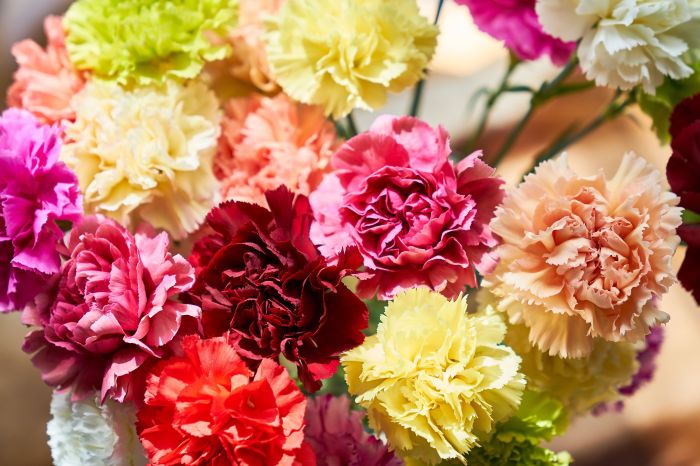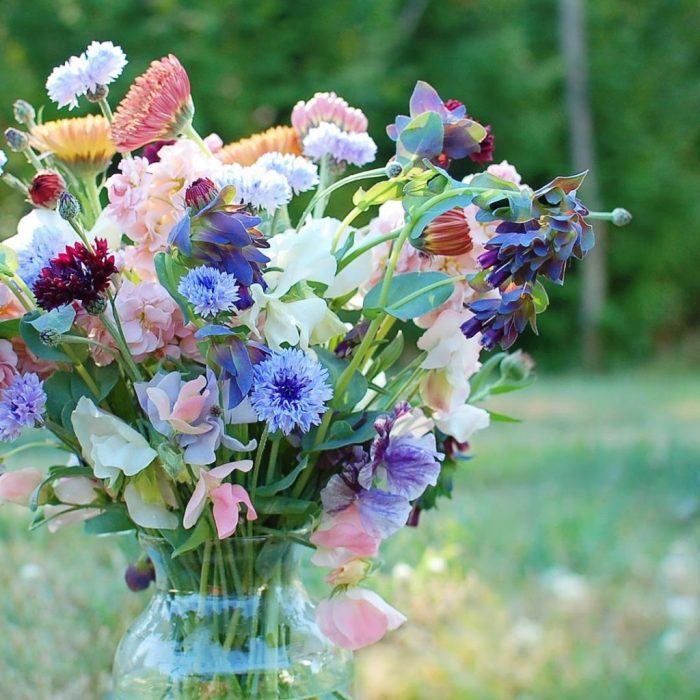Embark on a floral adventure with the best plants to grow for cut flowers, transforming your home into a captivating oasis. Whether you’re a seasoned gardener or a budding enthusiast, this guide will provide you with the essential knowledge to cultivate stunning blooms that will elevate any occasion.
From planning your cutting garden to harvesting and preserving your precious blooms, this comprehensive guide covers everything you need to know to create a flourishing cut flower haven.
Best Plants for Cutting Gardens

For gardeners who love to bring the beauty of their gardens indoors, cutting gardens are a must-have. These specialized gardens are filled with plants specifically chosen for their long-lasting blooms and ease of cutting. Here are some of the most popular plants grown for cut flowers:
Bloom Time, Height, and Flower Size
When selecting plants for a cutting garden, consider their bloom time, height, and flower size. Bloom time determines when you’ll have fresh flowers available, while height and flower size influence the types of arrangements you can create.
- Early Bloomers:These plants produce flowers in early spring, providing a welcome splash of color after a long winter. Examples include tulips, daffodils, and hyacinths.
- Mid-Season Bloomers:Blooming from late spring to early summer, mid-season bloomers include roses, peonies, and irises. These flowers offer a wide range of colors and shapes.
- Late Bloomers:For late summer and fall color, consider planting dahlias, zinnias, and sunflowers. These plants produce large, showy flowers that are perfect for bold arrangements.
Planning a Cutting Garden
To create a successful cutting garden, careful planning is essential. Factors such as sunlight, soil conditions, and companion planting all play a crucial role in determining the success of your garden.
First, consider the amount of sunlight your garden will receive. Most cut flowers require at least six hours of direct sunlight per day, although some varieties can tolerate partial shade. Soil conditions are also important, as cut flowers generally prefer well-drained, fertile soil.
With the variety of blooms available for cut flowers, it can be difficult to choose the best ones for your needs. While some flowers are known for their beauty and longevity, others are more suitable for expressing sympathy and condolences.
If you’re looking for plants that can provide both beauty and comfort, consider the best plants for sympathy . These plants are known for their resilience, adaptability, and ability to bring solace during difficult times. When you’re ready to return to the topic of cut flowers, keep in mind that these versatile plants can also be used to create stunning arrangements that will brighten any room.
If your soil is heavy or clay-like, you may need to amend it with compost or other organic matter to improve drainage and fertility.
Companion Planting
Companion planting can be a beneficial strategy in a cutting garden. By planting compatible species together, you can improve the overall health and productivity of your plants. For example, planting marigolds around your roses can help deter pests, while planting basil near your tomatoes can improve their growth and flavor.
Harvesting and Caring for Cut Flowers: Best Plants To Grow For Cut Flowers
Ensuring the longevity of cut flowers requires proper harvesting and care techniques. Follow these guidelines to extend the vase life and preserve the beauty of your blooms.
Harvesting Techniques
- Cut in the morning:Harvest flowers when they are fully open or just beginning to open, typically in the morning when the flowers are hydrated and cool.
- Use sharp tools:Employ sharp shears or a knife to make clean cuts, minimizing damage to the stems.
- Remove foliage:Remove any leaves that will be submerged in water, as they can promote bacterial growth.
- Cut at an angle:Cut the stems at a 45-degree angle to increase water uptake.
- Condition the stems:Immediately after cutting, place the stems in lukewarm water for several hours to rehydrate them.
Storage and Conditioning
- Cool storage:Store cut flowers in a cool, dark location with good air circulation.
- Change water regularly:Replace the water in vases every few days to prevent bacterial growth.
- Add floral preservative:Use a commercial floral preservative to extend vase life and prevent wilting.
- Avoid ethylene:Keep cut flowers away from fruits and vegetables that produce ethylene gas, which can shorten their lifespan.
Using Cut Flowers in Arrangements

Transform your cut flowers into stunning arrangements that will brighten any space. From elegant bouquets to eye-catching centerpieces, explore the endless possibilities of floral artistry.
Among the many benefits of gardening, growing flowers for cut arrangements is a popular choice. Whether it’s for home décor or special occasions, cut flowers add a touch of elegance and freshness. While selecting the best plants for cut flowers is important, considering the principles of feng shui can enhance the positive energy in your home.
From vibrant blooms like sunflowers and roses to calming lavender and peace lilies, the best plants feng shui can bring harmony and balance to your living spaces. By incorporating these plants into your cut flower arrangements, you can create a beautiful and inviting atmosphere that promotes well-being and prosperity.
Bouquets
Create a symphony of colors and textures with a bouquet. Arrange flowers in a spiral pattern, starting with the focal point at the center. Add filler flowers and greenery to enhance volume and create a balanced composition.
Centerpieces, Best plants to grow for cut flowers
Elevate your table setting with a captivating centerpiece. Use a tall vase to create a dramatic display or opt for a low bowl for a more intimate arrangement. Experiment with different heights and shapes of flowers to achieve a dynamic look.
Boutonnieres
Craft a sophisticated boutonniere for special occasions. Choose a single bloom or a small cluster of flowers. Wire or pin the flowers together, adding greenery or ribbons for embellishment. Attach the boutonniere to the lapel or pocket.
In the realm of cut flower cultivation, gardeners seek varieties that offer both aesthetic appeal and longevity. Among the top choices are roses, lilies, and dahlias. For those interested in a sustainable approach to gardening, best plants aquaponics offers an eco-friendly option.
By integrating fish farming with plant cultivation, aquaponics provides nutrients for plants while purifying water for fish. As a result, gardeners can cultivate vibrant and healthy cut flowers while promoting a closed-loop ecosystem.
Preserving Cut Flowers

Preserving cut flowers extends their beauty beyond their natural lifespan, allowing you to enjoy their aesthetic charm for a longer duration. This article explores various methods of flower preservation, including drying, pressing, and freezing, empowering you to create enchanting dried flower arrangements and other decorative pieces.
Drying flowers is a popular technique that involves removing moisture from the petals and stems. This can be achieved through air drying, silica gel, or microwave drying. Air drying is the most straightforward method, where flowers are hung upside down in a well-ventilated area for several weeks until completely dry.
Silica gel drying, on the other hand, accelerates the process by absorbing moisture from the flowers when placed in a sealed container with the gel. Microwave drying is a faster option but requires caution to avoid scorching the flowers.
Pressing Flowers
Flower pressing involves flattening and preserving flowers between absorbent materials, such as blotting paper or newspaper. This technique is ideal for delicate flowers with thin petals. Place the flowers between the absorbent layers and weigh them down with heavy books or a flower press.
The pressing process can take several weeks, depending on the thickness and moisture content of the flowers.
Freezing Flowers
Freezing is an effective method for preserving the color and shape of flowers. Wrap the flowers in damp paper towels and place them in an airtight container before freezing. This technique is particularly suitable for flowers with a high water content, such as roses and lilies.
When ready to use, thaw the flowers slowly in the refrigerator to prevent wilting.
Closing Summary

With careful planning and proper care, growing cut flowers can be a rewarding and fulfilling endeavor. Whether you’re creating breathtaking bouquets for special events or simply adding a touch of elegance to your daily life, these versatile plants will bring joy and beauty to your surroundings.
Answers to Common Questions
What are the most popular cut flowers?
Roses, lilies, tulips, sunflowers, and zinnias are among the most popular cut flowers due to their beauty, versatility, and long vase life.
How do I plan a cutting garden?
Consider factors such as sunlight, soil conditions, and companion planting. Design your garden for maximum yield and aesthetic appeal, ensuring a continuous supply of blooms.
How do I harvest cut flowers properly?
Harvest flowers in the early morning when they are fully open but not wilted. Use sharp, clean shears and cut stems at a slant to promote water absorption.